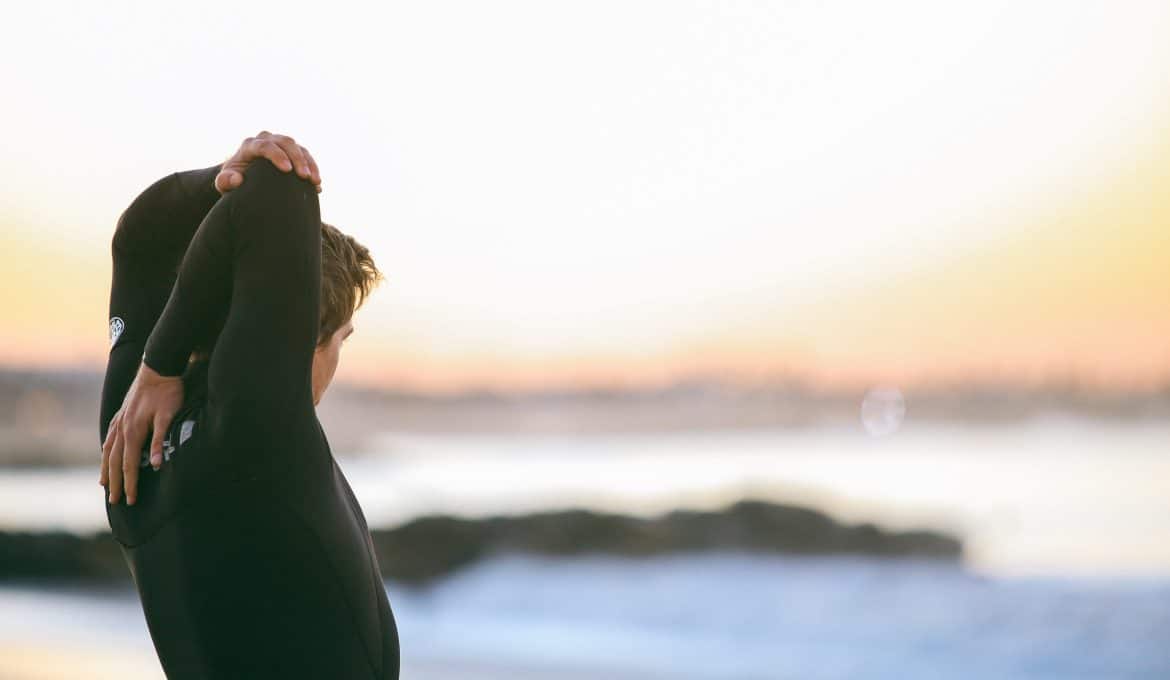Going out on the water in the winter is a blast! There are so many fewer people, even familiar landscapes look new, and winter has a beauty of its own. However, it’s important that you take extra measures to stay warm in the winter. Most kayakers and other paddlers end up buying a wetsuit, a drysuit, or both. Here’s what you need to know to figure out what you need for your winter water adventures.
What is a Wetsuit?


A wetsuit is made out of neoprene. It allows a thin layer of water inside the suit. Your body heat warms this water, which provides an insulating layer between you and the freezing water around you. Thicker neoprene is warmer but also less flexible. Wetsuits are usually rated by two numbers. The first tells you how thick the neoprene is over the torso and the second how thick it is at the arms and legs.
Wetsuits come in several variations, from something that looks like overalls (the Farmer John), to something that has short legs and arms (the Shorty), to something that almost covers your whole body. You can also purchase tops and bottoms separately if that works better for your needs or your body.
Your wetsuit should fit as snugly as possible without cutting off blood flow or squeezing you too tightly. You need it tight so that your body heat can effectively warm the water that gets inside of it. If there’s too much water, then you won’t be able to get warm.
What is a Drysuit?


A drysuit is a large, roomy suit made of waterproof material with gaskets at the wrists, ankles, and neck that are designed to keep water away from your body completely. Note that these gaskets can fail, especially if they aren’t well cared for or they get old. Also, most gaskets are made of latex, so paddlers with allergies should find another solution.
A drysuit is basically a waterproof outer layer, like a windbreaker for your whole body. To stay warm inside of it, you’ll need to wear at least a couple of layers underneath. You shouldn’t have to worry about these getting wet because the suit should keep the water away from them.
Drysuits are significantly more expensive than wetsuits, though you can spend the same if you’re getting a very nice wetsuit. However, they aren’t optional at lower temperatures.
How do I Choose?
Whenever you’re paddling, you should dress for the temperature of the water first, rather than the temperature outside. This can be particularly important in the spring when temps rise but the water hasn’t had a chance to heat up yet. Because you’re dressing for the water temperature, you may need to check site reports or talk to rangers to find out what you need to wear.
You also need to dress for your own needs. If you tend to be cold, then you should dress warmer than we outline in this guide. If you are always warm, you may not need as many layers. It may take you a few paddles to figure out exactly what you want to wear. If you’re not sure, always bring or wear more clothes than you think you might need, rather than less.
With that in mind, we recommend that you wear the following in certain temperatures:
- Water below 45 degrees: It may not sound that cold, but being submerged in 45-degree water is brutal. A lot of people panic and shut down, even when they are wearing the proper gear. With that said, always, always wear a drysuit when water temps are this low and paddle with a group that includes people experienced in cold water rescues. Wear a diving hood if you can, for the added protection it will offer if you go in.
- Water is 45-60 degrees: In this range, most people will want a drysuit with a variety of layers underneath it. For colder water, wear more and warmer layers. For warmer water, one good one may suffice. If you are extremely warm-blooded, you may be able to get away with a full, 4/3 wetsuit. However, paddling with thick neoprene over your arms can be hard. No matter what you wear, protect your hands, feet, and head as well as your body.
- Water is 55-70 degrees: At these temps, many people will be comfortable in a Farmer John wetsuit with warm layers over the top to protect the arms. At the bottom of this range, some may want to wear a drysuit, while others may choose a lightweight full wetsuit. This is one scenario where you might want to consider the air temperatures as well. If the air is warmer than the water, a drysuit might feel very hot. If it’s cooler than the water, that same suit might feel amazingly comfortable.
- Water is 70+ degrees: Unless you get cold VERY easily, you probably don’t need any suit. If air temps are below 50-55 degrees, bring along a dryshirt and some extra layers to stay warm in your boat or on your board.
If you’re not sure how warm the water is where you want to paddle, ask around. Talk to people at local sports stores or call the rangers stationed nearby. They may be able to help you get the information you need to stay warm out there.
Have you spent any time in the water this winter? How do you typically prepare?




